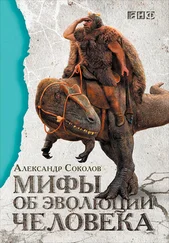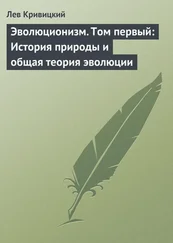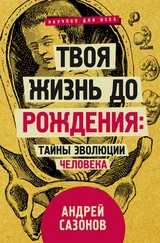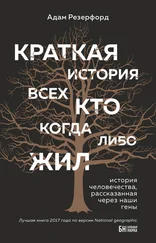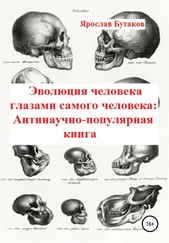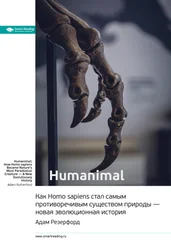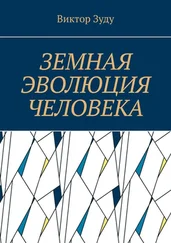Michael Krützen et al., Contrasting relatedness patterns in bottlenose dolphins ( Tursiops sp. ) with different alliance strategies, Proceedings of the Royal Society B 270 (1514) (7 March 2003).
Michael Krützen et al., Cultural transmission of tool use in bottlenose dolphins, PNAS 102 (25): 8939–43 (21 June 2005).
M. Mirazón Lahr et al., Inter-group violence among early Holocene hunter-gatherers of West Turkana, Kenya, Nature 529: 394–8 (21 January 2016).
Greger Larson et al., Worldwide phylogeography of wild boar reveals multiple centers of pig domestication, Science 307 (5715): 1618–21 (11 March 2005).
David J. Linden, The Compass of Pleasure: How Our Brains Make Fatty Foods, Orgasm, Exercise, Marijuana, Generosity, Vodka, Learning, and Gambling Feel So Good, Penguin, 2011.
Mark Lipson et al., Population turnover in remote Oceania shortly after initial settlement, Current Biology 28 (7): 1157–65 (7 April 2018).
C. W. Marean et al., Early human use of marine resources and pigment in South Africa during the Middle Pleistocene, Nature 449: 905–8 (18 October 2007).
S. McBrearty and A. S. Brooks, The revolution that wasn’t: A new interpretation of the origin of modern human behavior, Journal of Human Evolution 39 (5): 453–63 (November 2000).
Aoife McLysaght and Laurence D. Hurst, Open questions in the study of de novo genes: What, how and why, Nature Reviews Genetics , 17: 567–78 (25 July 2016).
John C. Mitani et al., Lethal intergroup aggression leads to territorial expansion in wild chimpanzees, Current Biology 20 (12): R507–R508 (22 June 2010).
Smita Nair et al., Vocalizations of wild Asian elephants ( Elephas maximus ): Structural classification and social context, Journal of the Acoustical Society of America 126 (5): 2768 (November 2009).
James Neill, The Origins and Role of Same-Sex Relations in Human Societies, McFarland & Co., 2011.
Hitonaru Nishie and Michio Nakamura, A newborn infant chimpanzee snatched and cannibalized immediately after birth: Implications for «maternity leave» in wild chimpanzee, American Journal of Physical Anthropology 165: 194–9 (January 2018).
Sue O’Connor et al., Fishing in life and death: Pleistocene fish-hooks from a burial context on Alor Island, Indonesia, Antiquity 91 (360): 1451–68 (6 December 2017).
H. Freyja Ólafsdóttir et al., Hippocampal place cells construct reward related sequences through unexplored space, Elife 4: e06063 (26 June 2015).
Seweryn Olkowicz et al., Birds have primate-like numbers of neurons in the forebrain, PNAS 113 (26): 7255–60 (28 June 2016).
C. Organ et al., Phylogenetic rate shifts in feeding time during the evolution of Homo, PNAS 108 (35): 14555–9 (30 August 2011).
A. Powell, S. Shennan and M. G. Thomas, Late Pleistocene demography and the appearance of modern human behavior, Science 324 (5932): 1298–1301 (5 June 2009).
Shyam Prabhakar, Accelerated evolution of conserved noncoding sequences in humans, Science 314 (5800): 786 (3 November 2006).
Shyam Prabhakar et al., Human-specific gain of function in a developmental enhancer, Science 321 (5894): 1346–50 (5 September 2008).
D. M. Pratt and V. H. Anderson, Population, distribution and behavior of giraffe in the Arusha National Park, Tanzania, Journal of Natural History 16 (4): 481–9 (1982).
D. M. Pratt and V. H. Anderson, Giraffe social behavior, Journal of Natural History 19 (4): 771–81 (1985).
Helmut Prior et al., Mirror-induced behavior in the magpie ( Pica pica ): Evidence of self-recognition, PLoS Biology 6 (8): e202 (19 August 2008).
Jill D. Pruetz et al., Savanna chimpanzees, Pan troglodytes verus , hunt with tools, Current Biology 17 (5): 412–17 (6 March 2007).
Jill D. Pruetz and Nicole M. Herzog, Savanna chimpanzees at Fongoli, Senegal, navigate a fire landscape, Current Anthropology 58 (S16): S337–S350 (August 2017).
Jill D. Pruetz and Thomas C. LaDuke, Reaction to fire by savanna chimpanzees ( Pan troglodytes verus ) at Fongoli, Senegal: Conceptualization of «fire behavior» and the case for a chimpanzee model, American Journal of Physical Anthropology 141 (14): 646–50 (April 2010).
Kay Prüfer et al., The bonobo genome compared with the chimpanzee and human genomes, Nature 486: 527–31 (28 June 2012).
Anita Quiles et al., A high-precision chronological model for the decorated Upper Paleolithic cave of Chauvet-Pont d’Arc, Ardèche, France, PNAS 113 (17): 4670–75 (26 April 2016).
Joaquín Rodríguez-Vidal et al., A rock engraving made by Neanderthals in Gibraltar, PNAS 111 (37): 13301–6 (16 September 2014).
Douglas G. D. Russell et al., Dr. George Murray Levick (1876–1956): Unpublished notes on the sexual habits of the Adélie penguin, Polar Record 48 (4): 387–93 (January 2012).
Anne E. Russon et al., Orangutan fish eating, primate aquatic fauna eating, and their implications for the origins of ancestral hominin fish eating, Journal of Human Evolution 77: 50–63 (December 2014).
Graeme D. Ruxton and Martin Stevens, The evolutionary ecology of decorating behaviour, Biology Letters 11 (6) (3 June 2015).
Angela Saini, Inferior: How Science Got Women Wrong, Fourth Estate, 2017.
Ivan Sazima, Corpse bride irresistible: A dead female tegu lizard ( Salvator merianae ) courted by males for two days at an urban park in south-eastern Brazil, Herpetology Notes 8: 15–18 (25 January 2015).
Y. Schnytzer et al., Boxer crabs induce asexual reproduction of their associated sea anemones by splitting and intraspecific theft, PeerJ 5: e2954 (31 January 2017).
Helmut Schmitz and Herbert Bousack, Modelling a historic oil-tank fire allows an estimation of the sensitivity of the infrared receptors in pyrophilous Melanophila beetles, PLoS ONE 7 (5): e37627 (21 May 2012).
Erin M. Scott et al., Aggression in bottlenose dolphins: Evidence for sexual coercion, male — male competition, and female tolerance through analysis of tooth-rake marks and behaviour, Behaviour 142 (1): 21–44 (January 2005).
Agnieszka Sergiel et al., Fellatio in captive brown bears: Evidence of long-term effects of suckling deprivation? Zoo Biology 9999: 1–4 (4 June 2014).
William Shakespeare, The Tragedy of Hamlet, Prince of Denmark, Folio 1, 1623; в русском переводе, например: У. Шекспир. Трагическая история о Гамлете принце Датском//У. Шекспир. Сочинения. М.; Л.: ГИХЛ, 1933.
Michael Sporny et al., Structural history of human SRGAP2 proteins, Molecular Biology and Evolution 34 (6): 1463–78 (1 June 2017).
James J. H. St Clair et al., Hook innovation boosts foraging efficiency in tool-using crows, Nature Ecology & Evolution 2: 441–4 (22 January 2018).
A. P. Steiner and A. D. Redish, Behavioral and neurophysiological correlates of regret in rat decision-making on a neuroeconomic task, Nature Neuroscience 17 (7): 995–1002 (8 June 2014).
Peter H. Sudmant, Diversity of human copy number variation and multicopy genes, Science 330 (6004): 641–6 (29 October 2010).
Hiroyuki Takemoto et al., How did bonobos come to range south of the Congo River? Reconsideration of the divergence of Pan paniscus from other Pan populations, Evolutionary Anthropology 24 (5): 170–84 (September 2015).
Min Tan et al., Fellatio by fruit bats prolongs copulation time, PLoS ONE 4 (10): e7595 (28 October 2009).
Читать дальше
Конец ознакомительного отрывка
Купить книгу

